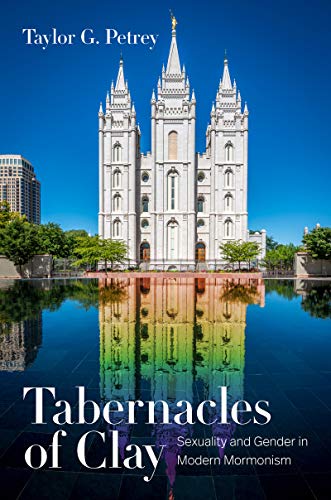What do you think?
Rate this book


290 pages, Kindle Edition
First published June 15, 2020
"[If same-sex marriage were enshrined into law], it would stigmatize us as fools or bigots, akin to racists [and would] impede our full participation in democratic life."
So read the amicus brief signed by the Church in the Obergefell v. Hodges case before the Supreme Court that legalized same-sex marriage. The argument seems like what would be termed a "self-own"; the writers fully realized that there was a moral weight in same-sex marriage that they weren't willing to accept. And they would be right. This February, Rep. Alexandria Ocasio-Cortez in a House hearing on civil rights for LGBT individuals said:
I cannot-- it is very difficult to sit here and listen to arguments in the long history of this country using scripture, and weaponizing and abusing scripture to justify bigotry. White supremacists have done it, those who justified slavery did it, those who fought against integration did it, and we're seeing it today.
Taylor Petrey's latest book covers more than just the intersection of The Church of Jesus Christ of Latter-Day Saints and LGBT individuals, but rather puts it a larger frame of reference including race and gender. In this respect, even though it covers much of the same material as Prince's Gay Rights and the Mormon Church: Intended Actions, Unintended Consequences, it has a much different approach. One of the biggest differences is Prince's very strong assumption of fixed and determined sexuality. Petrey states one of the central theses of his book in the context of queer theory:
Queer theory takes as its subject something much more fundamental, namely, the categories and distinctions between sexes, genders, sexualities, races, abilities, and so on. This paradigm challenges the idea of the self-evident and instead seeks to historicize and question claims about essential and stable identities by looking at where those boundaries wear thin. This method is the starting point of the present study. The supposed differences of sexes, genders, and races are historical and ideological, not natural and fixed.
Petrey asserts that even the Church itself argues from a point of gender fluidity, rather than a stance of "gender essentialism", caught most succinctly in "The Family: A Proclamation to the World" that gender is eternal. The Church has argued, and still argues to some extent, that sexuality can change. Reparative therapy depends on it. Church leaders have also expressed anxiety about the crumbling of clearly defined boundaries between the roles of men and women, which Petrey describes as the "fragility of gender identity."
This book is hard to read as a faithful member of the Church. It is not a polemic, and in fact the hardest parts to read aren't Petrey's interpretations rather than the words of Church leaders themselves. Especially as a gay Latter-Day Saint who has been affected personally by these doctrines and teachings, it hurts to read such things from leaders who you sustain as prophets, seers, and revelators. Here are a few of the lines I highlighted, as well as some of my notes in the margins:
From the Mormon and Gay website: Identifying oneself as gay or lesbian is not against Church policy or doctrine; however, it may have undesired consequences in the way one is treated. e.g. we will judge you.
From Boyd K. Packer's conference talk I remember hearing on my mission: Some suppose that they were pre-set and cannot overcome what they feel are inborn tendencies toward the impure and unnatural. Not so! Why would our Heavenly Father do that to anyone? Remember he is our father. More concerned with defending God than helping others, even tearing them down.
Not every church leader was willing to accept the possibility of an "inborn" set of homosexual feelings, even in the highly qualified form that Oaks had offered. I never thought of Oaks as a progressive thinker.
On the one hand, oral sex was deemed to be explicitly forbidden and disqualifying for entering the temple. On the other hand, church leaders were forbidden from asking about it explicitly and also prevented from explicitly forbidding it. Kimball's instructions here invoked the idea of "anxiety" about sexual acts, even those within marriage, as evidence that they were immoral. And y'all wonder why we're all messed up when it comes to healthy attitudes about sex.
From BYU's President Wilkinson: If anyone of you have this tendency and have not completely abandoned it, may I suggest that you leave the university after this assembly... We do not want others on this campus to be contaminated by your presence. I don't have words.
And lastly In another feature, Andy explained "I'm gay. I hate saying that that doesn't define me because it does. It's a big part of what defines me" ... Andy and his parents talk about the problem of reconciling his identity with church teachings, and his parents admitted they don't have all the answers. They all learned to live with "spiritual ambiguity". No gay Latter-Day Saint can survive without living with spiritual ambiguity.. and a little bit of bitterness too.
I am grateful for Petrey's addition to the discussion of these important in our Church. I don't give up hope, because I have seen the good of Latter-Day Saints on the ground. I have had bishops and elders quorum presidents and friends who have been a blessing to me, even as I struggled. We have set obstacles up that don't need to be there. We still have a long way to go.